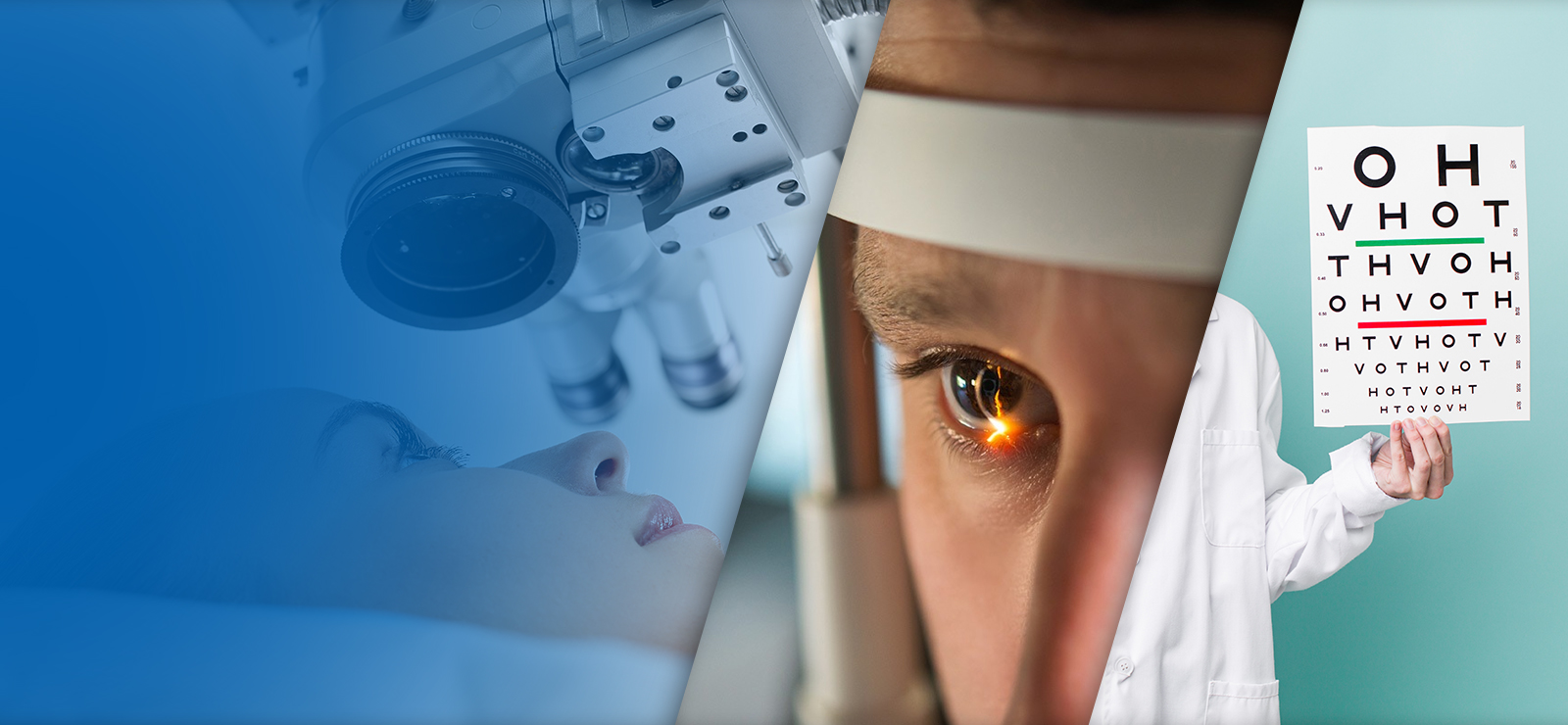
Savera Hospital
Amritsar Road, Opp. Dera Beas Moga
Phone Number
+(91) 9855827744
Send Your Mail
santnetralaya@gmail.com
Retinal Detachment
Q.What is retinal detachment ?
Retinal detachment is an eye problem that happens when your retina (a light-sensitive layer of tissue in the back of your eye) is pulled away from its normal position at the back of your eye.
Q.What are the symptoms of retinal detachment ?
If only a small part of your retina has detached, you may not have any symptoms.
But if more of your retina is detached, you may not be able to see as clearly as normal, and you may notice other sudden symptoms, including:
- A lot of new floaters (small dark spots or squiggly lines that float across your vision)
- Flashes of light in one eye or both eyes
- A dark shadow or “curtain” on the sides or in the middle of your field of vision
Retinal detachment is a medical emergency. If you have symptoms of a detached retina, it’s important to go to your eye doctor or the emergency room right away.
The symptoms of retinal detachment often come on quickly. If the retinal detachment isn’t treated right away, more of the retina can detach — which increases the risk of permanent vision loss or blindness.
Q.Who are at risk for retinal detachment ?
Anyone can have a retinal detachment, but some people are at higher risk. You are at higher risk if:
- You or a family member has had a retinal detachment before
- You’ve had a serious eye injury
Some other problems with your eyes may also put you at higher risk, including:
- Diabetic retinopathy (a condition in people with diabetes that affects blood vessels in the retina)
- Extreme nearsightedness (myopia), especially a severe type called degenerative myopia
- Posterior vitreous detachment (when the gel-like fluid in the center of the eye pulls away from the retina)
- Certain other eye diseases, including retinoschisis (when the retina separates into 2 layers) or lattice degeneration (thinning of the retina)
If you’re concerned about your risk for retinal detachment, talk with your eye doctor.
Q.What are different types of retinal detachment ?
1.Rhegmatogenous retinal detachment
Rhegmatogenous retinal detachment, the most prevalent type, typically manifests with age. It involves the formation of a small tear in the retina, allowing vitreous humor, a gel-like fluid, to pass through the tear and accumulate behind the retina. This accumulation exerts pressure on the retina, causing it to detach from the back of the eye. The aging process contributes to the shrinkage and thinning of the vitreous, leading to traction on the retina and subsequent tearing.
2.Tractional retinal detachment
Tractional retinal detachment is characterized by the pulling of the retina away from the back of the eye due to scar tissue on the retina. Diabetes commonly triggers such detachments, as prolonged periods of elevated blood sugar levels can harm eye blood vessels, resulting in the formation of scar tissue. Over time, these scars, along with areas of traction, can expand, pulling the retina away from its normal position.
3.Exudative retinal detachment
Exudative retinal detachment occurs when fluid accumulates behind the retina, even without a pre-existing tear. The fluid buildup displaces the retina from its supporting tissue. Leaking blood vessels or swelling behind the eye, often associated with conditions like uveitis (eye inflammation), are primary contributors to the fluid accumulation leading to this type of retinal detachment.
Q.How will my doctor check for retinal detachment ?
If you see any warning signs of a retinal detachment, your eye doctor can check your eyes with a dilated eye exam. Your doctor will give you some eye drops to dilate (widen) your pupil and then look at your retina at the back of your eye.
This exam is usually painless. The doctor may press on your eyelids to check for retinal tears, which may be uncomfortable for some people.
If your eye doctor still needs more information after a dilated eye exam, you may get an ultrasound or an optical coherence tomography (OCT) scan of your eye. Both of these tests are painless and can help your eye doctor see the exact position of your retina.
Q.How do you treat retinal detachment ?
Your eye care provider will discuss treatment options with you. You may need a combination of treatments for the best results.
Treatments include:
• Laser therapy or cryopexy.
• Pneumatic (gas bubble) retinopexy.
• Scleral buckle.
• Vitrectomy.
Laser (thermal) therapy or cryopexy (freezing)
Sometimes, your provider will diagnose a retinal tear before the retina starts pulling away. Your provider uses a medical laser or a freezing tool to seal the tear. These devices create a scar that holds the retina in place.
Pneumatic retinopexy
Your provider may recommend this approach for the right candidates.
During pneumatic retinopexy:
1. Your provider injects a small gas bubble into the eye.
2. The bubble presses against the retina, closing the tear.
3. You may need laser or cryopexy (freezing) to seal the tear.
4. Your body reabsorbs the fluid that collected under your retina. Your retina can now stick to your eye wall the way that it should. Eventually, your body also absorbs the gas bubble.
After surgery, your provider will recommend that you keep your head still for a few days to promote healing. Your provider may also tell you what position you should lie in or sleep in. These recommendations may seem uncomfortable or annoying, but they’re particularly important. It’s a short-term sacrifice for long-term benefits.
Scleral buckle
During a scleral buckle surgery:
1. Your provider surgically places a silicone band or sponge (buckle) around the eye.
2. The band holds the retina in place and stays there permanently. You can’t see the band.
3. Your provider seals the tear with a laser or cryopexy.
4. Your provider may inject a gas bubble or drain the fluid under the retina to help reattach it.
Vitrectomy
During a vitrectomy, your provider:
1. Surgically removes the vitreous.
2. Uses laser or freezing to seal all retinal tears or holes.
3. Places a bubble of air, gas or oil in the eye to push the retina back in place.
If your provider uses an oil bubble, you’ll have it removed a few months later.
Your body reabsorbs gas and air bubbles. If you have a gas bubble, you may have to avoid activities at certain altitudes. The altitude change can increase the size of the gas bubble and the pressure in your eye. You’ll have to avoid flying and traveling to high altitudes.
Your provider will tell you when you can start these activities again.
Q.What are the complications/Side effects of retinal detachment ?
While surgery to reattach your retina is often very successful, any surgery can have risks or complications. These risks and complications include:
• Bleeding.
• Infection.
• Higher pressure in your eye (intraocular pressure).
• The chance that you may need another surgery.
• Membranes that form after surgery that can shrink and pull tissues out of place. The name for this is proliferative retinopathy or epiretinal membrane.
• Rapid cataract formation that requires additional cataract surgery.
Q.What can I expect after retinal detachment surgery?
After treatment for a detached retina, you may have some discomfort. It can last for a few weeks. Your provider will discuss pain medicine and other forms of relief. You’ll also need to take it easy for a few weeks.
Talk with your provider about when you can exercise, drive and get back to your regular activities.
Other things you can expect after surgery:
• Eye patch: Wear the eye patch for as long as your provider tells you to do so.
• Head position: If your provider put a gas bubble in your eye, follow instructions for your head position. Your provider will let you know the position your head should be in and how long to keep it there to help heal your eye. If your provider put silicone oil in your eye, you need to lie in supine position.
• Eye drops: Your provider will instruct you on how to use the drops to help your eye heal.
• Improved vision: About four to six weeks after surgery, you’ll start to notice your eyesight improving. It may take a few months until you notice the full effects.
Other Services

Comprehensive Exams

Dry Eyes Services

Advanced Ocular Care
Why Patients Choose Savera Eye Hospital
Patients choose Savera Eye Hospital for a variety of reasons, each reflecting our commitment to excellence in eye care and patient satisfaction. Here are some of the key factors that set us apart and make us the preferred choice for individuals seeking trusted eye care services.
01
Medical Experience
Savera Eye Hospital boasts a team of highly skilled and experienced ophthalmologists, optometrists, and support staff dedicated to delivering exceptional eye care. Our specialists have undergone rigorous training and possess extensive expertise in their respective fields, ensuring that our patients receive the highest standard of care.
02
Art Technology
We invest in cutting-edge technology and advanced equipment to provide precise diagnoses and effective treatments for a wide range of eye conditions. From diagnostic imaging tools to surgical instruments, our state-of-the-art facility is equipped with the latest advancements in eye care technology.
03
Comprehensive Services
Savera Eye Hospital offers a comprehensive range of eye care services, including routine eye exams, cataract surgery, refractive surgery, glaucoma management, retinal services, pediatric eye care, and more. Whether you need preventive care or specialized treatment, we have the expertise and resources to meet your needs.
04
03
Personalized Care
We understand that each patient is unique, and we take a personalized approach to care. From the moment you walk through our doors, our dedicated team takes the time to listen to your concerns, answer your questions, and develop a customized treatment plan tailored to your specific needs and goals.
04
04
Commitment to Quality and Safety
We adhere to the highest standards of quality and safety in everything we do. From maintaining strict infection control protocols to following evidence-based practices, we prioritize patient safety at every step of the way. Our commitment to quality is reflected in our consistently excellent outcomes and high patient satisfaction rates.

Savera Hospital was established in 2010 by Dr. Rajiv Kumar Gupta with the aim to provide high-quality, accessible and affordable eye care for all.
Make Appointment
- Monday - Saturday 09 AM - 04 PM
- SUNDAY 10 AM - 01 PM
Powered by Savera Eye Hospital- Moga (Punjab)
Copyright © 2024. All rights reserved.
